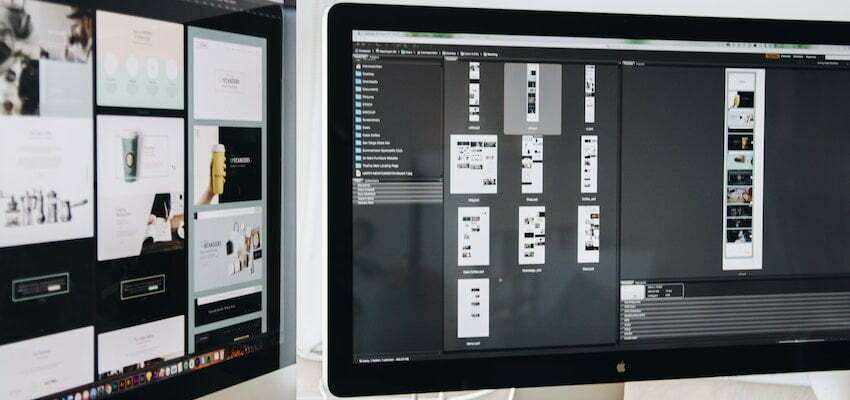WordPress Theme: How to Select The Best Premium Theme
Choosing the right theme for your WordPress site can be a daunting task. A premium theme can add a professional touch to your site and provide additional features that can help you stand out from the crowd. In this guide, we will take a look at the key factors to consider when choosing a premium WordPress theme, including design, features, support and updates, performance, price, customization options, plugin compatibility, mobile-friendliness, security and reviews and ratings. By following these guidelines, you can be confident that you will choose the best theme for your site that will help you achieve your goals and provide a great user experience for your visitors.
Free WordPress Theme vs Premium WordPress Theme
WordPress free themes and premium WordPress themes both have their own set of pros and cons.
Free WordPress themes are, as the name suggests, free to download and use. They can be a good option for those who are just starting out or have a limited budget. They also come with a wider range of options as there are thousands of free themes available in the WordPress repository.
However, free themes may not have as many features or customization options as premium themes. They also may not be updated as frequently, which can lead to compatibility issues with the latest version of WordPress and may contain security vulnerabilities.
On the other hand, premium WordPress themes are paid themes that come with more advanced features and customization options. They are often designed and developed by professional designers and developers, which means that they are of higher quality and have more advanced features. They also often come with regular updates and support from the developer.
However, premium themes can be costly, and it’s important to consider the features you need, before spending the money for them. Additionally, not all premium themes are created equal, so be sure to read reviews and test demos before making a purchase.
Ultimately, it depends on your specific needs and budget. If you’re just starting out and don’t need a lot of advanced features, a free theme may be a good choice. If you need more advanced features and customization options, or if you’re looking to create a professional-looking website, a premium theme may be a better choice.
Here are the factors to consider when choosing a premium WordPress theme.
- Modern Design
- Features
- Support and updates
- Performance
- Price
- Compatibility Check
- Security
- Reviews and ratings
Modern Design
Aesthetics
The design of the theme should match the overall aesthetic and branding of your website. It should also be appropriate for the purpose of your website, whether it’s a personal blog, an e-commerce site, or a professional portfolio. Look for themes that have clean, modern designs and easy-to-use layouts.
Color schemes
The theme should have a color scheme that complements your branding and makes your content stand out. Look for themes that offer multiple color options, or that allow you to customize the colors to match your branding.
Typography
The theme should have a font that is easy to read and complements the overall design. Some themes come with multiple font options, while others allow you to use custom fonts.
Images and Graphics
The theme should have a good balance of images and graphics that complement the overall design and help break up the text. Make sure the images and graphics are high-quality and relevant to the content of your website.
Responsive Design
The theme should be optimized for different screen sizes, so it looks and functions well on all devices. This is important because more and more people are browsing the web on their smartphones and tablets.
Customization
The theme should offer a high degree of customization, such as multiple layout options, color schemes, and font choices. This will allow you to create a unique look for your site that reflects your brand and personality. Some themes come with built-in customization tools that make it easy to change the design without any coding.
User Experience
The theme should have a user-friendly interface, easy navigation and logical organization of the content. It should be easy for visitors to find the information they’re looking for and to complete the desired actions.
In summary, when considering the design of a premium WordPress theme, you should look for a theme that matches your branding, has a clean and modern design, offers multiple color and font options, has high-quality images and graphics, is optimized for different screen sizes, offers customization options, and has a user-friendly interface.
Features
E-commerce Integration
If you plan to sell products or services online, look for a theme that has built-in e-commerce functionality. This will allow you to easily set up an online store and manage your inventory, orders, and payments.
Customizable layout options
Look for a theme that offers customizable layout options, such as multiple sidebar and footer widgets, and the ability to change the layout of different pages and posts. This will allow you to create a unique look for your site that reflects your brand and personality.
Responsive design
Make sure the theme is optimized for different screen sizes, so it looks and functions well on all devices. This is important because more and more people are browsing the web on their smartphones and tablets.
Sliders and Galleries
Some themes come with built-in sliders and galleries to showcase your images and videos. This can be a useful feature for portfolio sites or for highlighting products or services.
Social media integration
Look for a theme that has built-in social media integration, so you can easily share your content on social media platforms.
SEO-friendly
Make sure the theme is optimized for SEO, so your site will rank higher in search engine results. This can include features such as clean and valid code, optimized meta tags, and the ability to customize URLs.
Customizable widgets
Look for a theme that has customizable widgets, which allow you to add features such as calendars, contact forms, and social media links to your sidebar or footer.
Customizable post and page templates
Look for a theme that has customizable post and page templates, which allow you to create different layouts for different types of content.
Customizable menus
Look for a theme that has customizable menus, which allow you to create different menus for different pages and sections of your site.
Customizable sidebars
Look for a theme that has customizable sidebars, which allow you to create different sidebars for different pages and sections of your site.
In summary, when considering the features of a premium WordPress theme, you should look for a theme that offers e-commerce integration, customizable layout options, responsive design, sliders and galleries, social media integration, SEO-friendly, customizable widgets, customizable post and page templates, customizable menus, and customizable sidebars. These features can help make your site more functional, user-friendly, and appealing to visitors.
Support and updates
Regular updates
Look for a theme that is regularly updated to ensure compatibility with the latest version of WordPress and to address any known bugs or vulnerabilities. The developer should be responsive to any issues or bugs that arise and provide guidance on how to fix them.
Customer support
Look for a theme that comes with good customer support. The developer should be available to answer any questions or concerns you have about the theme. Support options can include email, phone, or a support forum.
Documentation
Look for a theme that comes with the comprehensive documentation that includes installation instructions, usage guides, and troubleshooting tips. This will help you to understand how to use the theme and its features and troubleshoot any issues that may arise.
Compatibility
Look for a theme that is compatible with the latest version of WordPress. As well as popular plugins that you may need for your website. This will ensure that your theme will work seamlessly with the latest version of WordPress and with any additional functionality you may need.
Security
Look for a theme that is built with security in mind, and that is updated regularly to address any known vulnerabilities. This will help to protect your site from hacking attempts and other security threats.
Demo content
Look for a theme that comes with demo content which you can use as a starting point. This will save you time and effort in creating your own content, and will also give you a good idea of how the theme looks and works.
In summary, when considering the support and updates of a premium WordPress theme. You should look for a theme that is regularly updated, comes with good customer support, has comprehensive documentation is compatible with the latest version of WordPress and popular plugins, is built with security in mind, and comes with demo content. This will ensure that your theme will work seamlessly with the latest version of WordPress. And that you have access to the help you need to troubleshoot any issues that may arise.
Compatibility Check
WordPress version
Make sure the theme is compatible with the latest version of WordPress. This is important because using an outdated theme can lead to compatibility issues, security vulnerabilities, and poor performance.
Plugins Compatibility
Verify if the theme is compatible with popular plugins that you may need for your websites, such as contact forms, social media integration, and SEO optimization tools. This will save you time and effort in the long run, as you won’t have to worry about compatibility issues.
Browser Compatibility
Test the theme on different web browsers such as Chrome, Firefox, Safari, Edge, and Internet Explorer. Make sure that the theme is compatible with all major browsers and that it looks and functions correctly.
Mobile-Friendly
Check if the theme is mobile-friendly and responsive, so it looks and functions well on all devices.
Performance
The theme must be SEO-optimized and at great speed. This means it should be lightweight, with minimal code bloat, and it should not negatively impact the loading time of your website. Test the theme on different devices and browsers to make sure it looks and functions correctly.
Price
Set a budget and compare the features and pricing of different themes to find the best value. While a higher-priced theme may have more features, it may not be necessary for your website, so look for a theme that meets your needs without breaking the bank.
Security
Check if the theme is built with security in mind and if it has been updated recently to address any known vulnerabilities. Make sure the theme is well-coded and doesn’t have any known security issues.
Reviews and ratings
Read reviews from other users to see what they think about the theme and its features. This will give you a good idea of the theme’s strengths and weaknesses, and you’ll be able to make a more informed decision.
Conclusion
In summary, while choosing a theme, it’s important to consider the design, features, support and updates, performance, price, customization options, plugin compatibility, mobile-friendliness, security, and reviews and ratings. Be sure to test the theme on different devices and browsers and read reviews from other users to ensure that it meets your needs and is of good quality.


